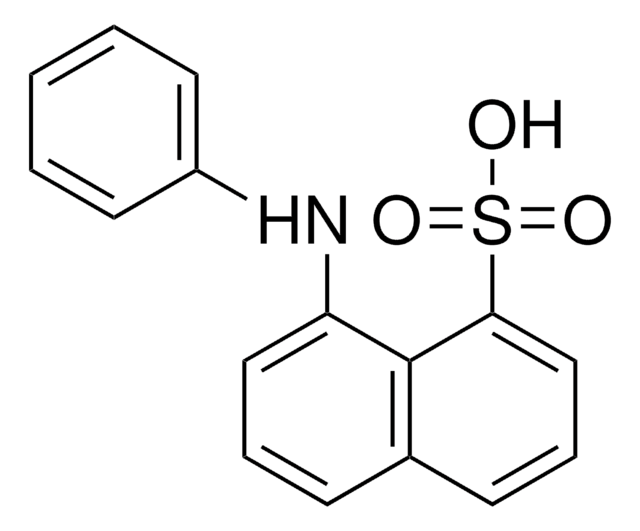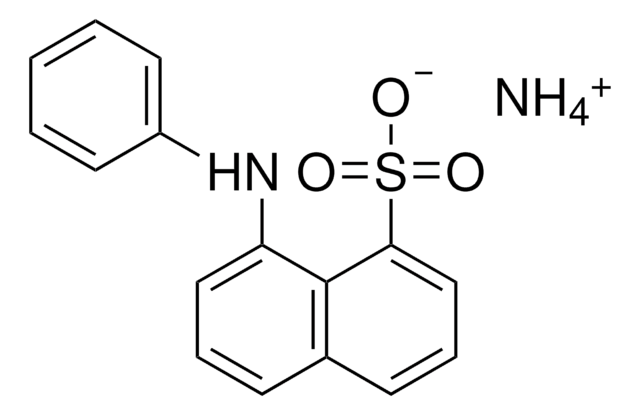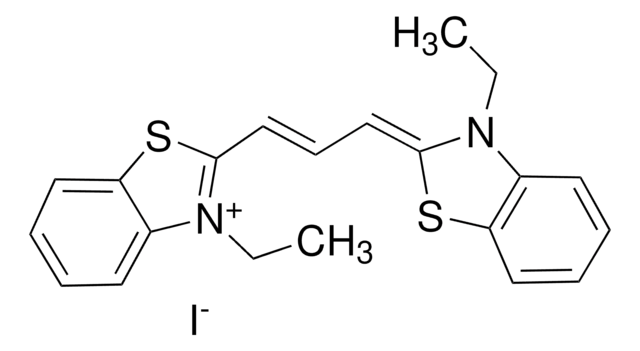72335
9-(2,2-Dicyanovinyl)julolidine
BioReagent, suitable for fluorescence, ≥97.0% (HPLC)
Synonym(s):
9-Julolidinylmethylenemalononitrile, DCVJ
About This Item
Recommended Products
product line
BioReagent
Quality Level
Assay
≥97.0% (HPLC)
form
crystals
solubility
DMSO: soluble
chloroform: soluble
fluorescence
λex 433 nm; λem 500 nm in 50 mM Tris pH 8.0; 40% glycerol
suitability
suitable for fluorescence
SMILES string
N#C\C(=C/c1cc2CCCN3CCCc(c1)c23)C#N
InChI
1S/C16H15N3/c17-10-13(11-18)7-12-8-14-3-1-5-19-6-2-4-15(9-12)16(14)19/h7-9H,1-6H2
InChI key
LROAUBRDKLVBCP-UHFFFAOYSA-N
Packaging
Other Notes
Storage Class Code
11 - Combustible Solids
WGK
WGK 3
Flash Point(F)
Not applicable
Flash Point(C)
Not applicable
Personal Protective Equipment
Certificates of Analysis (COA)
Search for Certificates of Analysis (COA) by entering the products Lot/Batch Number. Lot and Batch Numbers can be found on a product’s label following the words ‘Lot’ or ‘Batch’.
Already Own This Product?
Find documentation for the products that you have recently purchased in the Document Library.
Customers Also Viewed
Our team of scientists has experience in all areas of research including Life Science, Material Science, Chemical Synthesis, Chromatography, Analytical and many others.
Contact Technical Service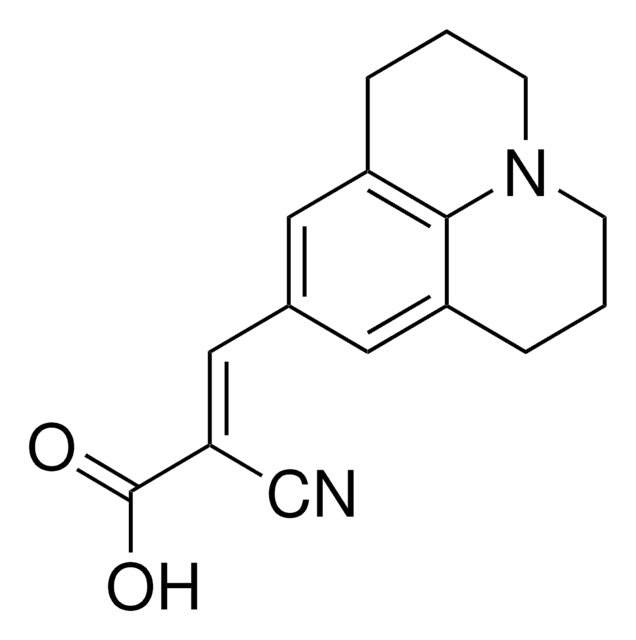
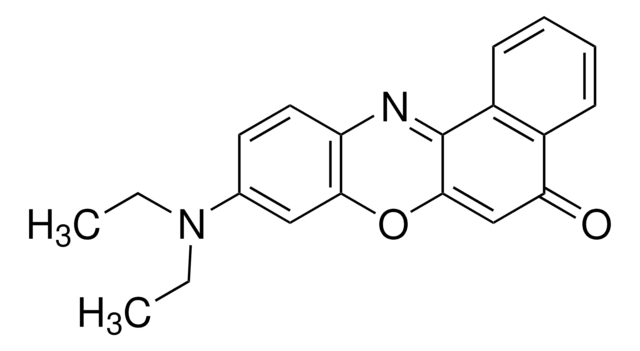
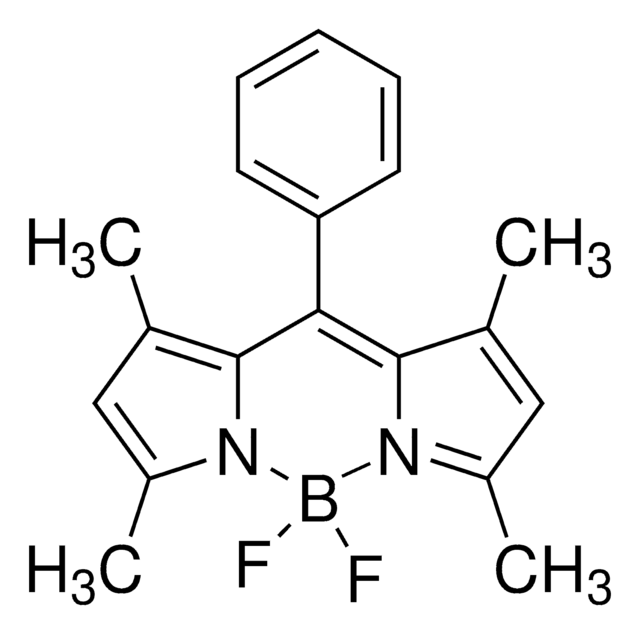
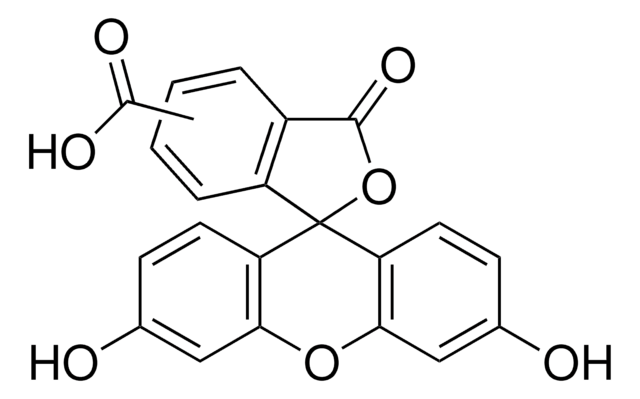


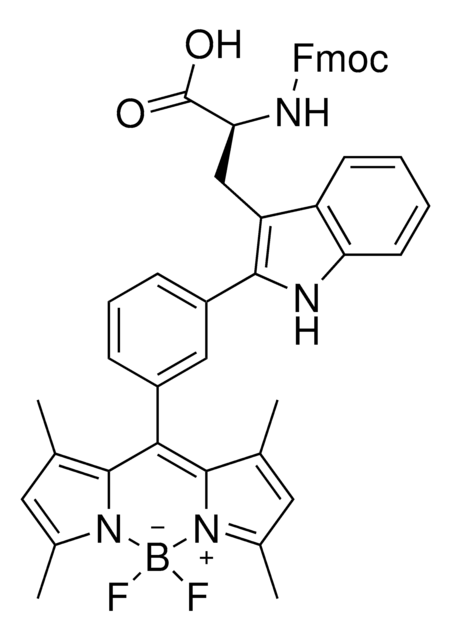
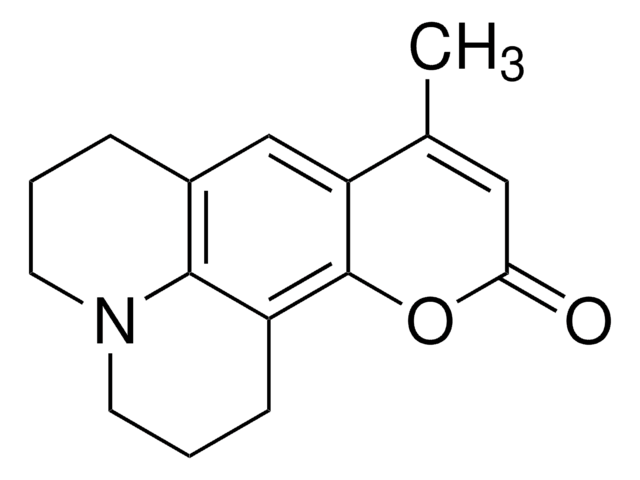
![trans-4-[4-(Dimethylamino)styryl]-1-methylpyridinium iodide Dye content 98 %](/deepweb/assets/sigmaaldrich/product/structures/416/722/5d59b6c3-5f2d-4396-a721-5cb82ba7038c/640/5d59b6c3-5f2d-4396-a721-5cb82ba7038c.png)
